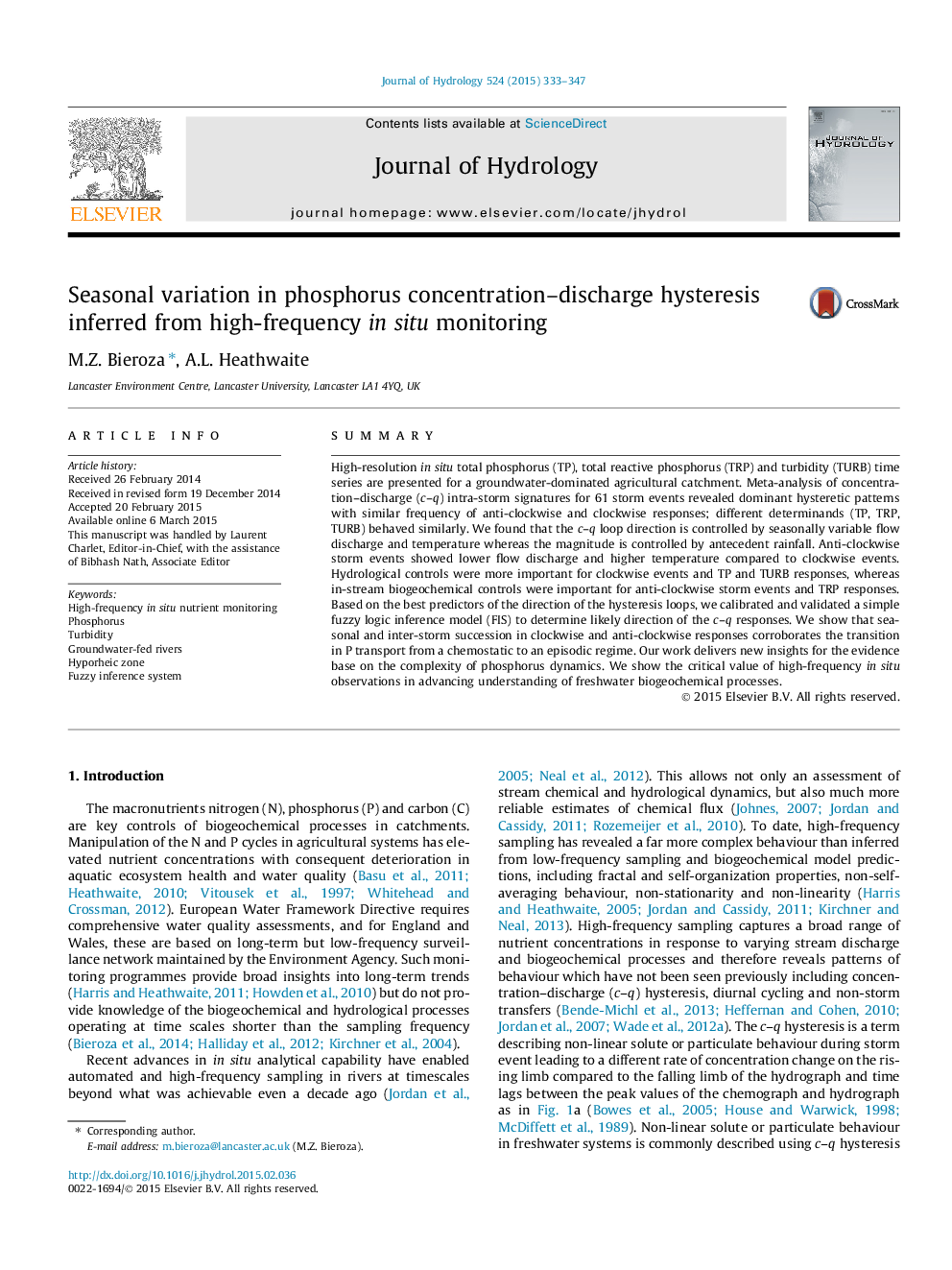| Article ID | Journal | Published Year | Pages | File Type |
|---|---|---|---|---|
| 6411422 | Journal of Hydrology | 2015 | 15 Pages |
â¢Hourly phosphorus and turbidity data show hysteresis patterns with stream discharge.â¢Clockwise and anti-clockwise events are both common and consistent for determinands.â¢Discharge volume and air temperature are the main controls of hysteresis direction.â¢Fuzzy logic model shows high accuracy in predicting the hysteresis direction.â¢There is a clear seasonal transition in phosphorus transport patterns.
SummaryHigh-resolution in situ total phosphorus (TP), total reactive phosphorus (TRP) and turbidity (TURB) time series are presented for a groundwater-dominated agricultural catchment. Meta-analysis of concentration-discharge (c-q) intra-storm signatures for 61 storm events revealed dominant hysteretic patterns with similar frequency of anti-clockwise and clockwise responses; different determinands (TP, TRP, TURB) behaved similarly. We found that the c-q loop direction is controlled by seasonally variable flow discharge and temperature whereas the magnitude is controlled by antecedent rainfall. Anti-clockwise storm events showed lower flow discharge and higher temperature compared to clockwise events. Hydrological controls were more important for clockwise events and TP and TURB responses, whereas in-stream biogeochemical controls were important for anti-clockwise storm events and TRP responses. Based on the best predictors of the direction of the hysteresis loops, we calibrated and validated a simple fuzzy logic inference model (FIS) to determine likely direction of the c-q responses. We show that seasonal and inter-storm succession in clockwise and anti-clockwise responses corroborates the transition in P transport from a chemostatic to an episodic regime. Our work delivers new insights for the evidence base on the complexity of phosphorus dynamics. We show the critical value of high-frequency in situ observations in advancing understanding of freshwater biogeochemical processes.
